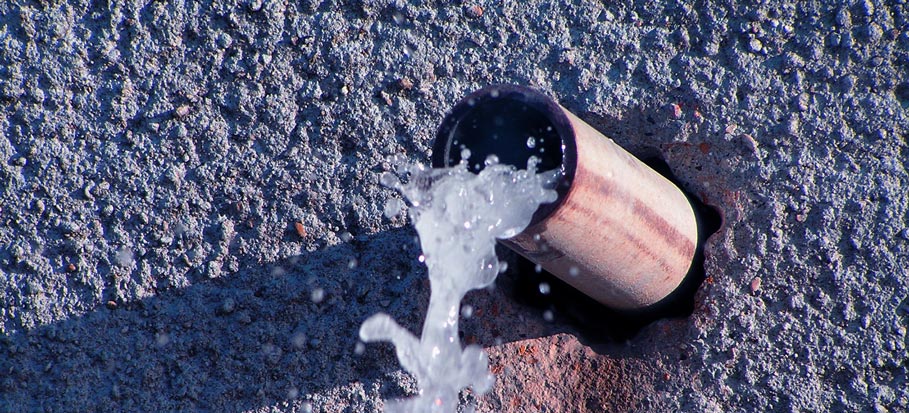Do you find yourself in search of critical information concerning Top leak detection hacks?

Early detection of leaking water lines can minimize a possible catastrophe. In addition to conserving you cash, it will certainly reduce the irritation and aggravation. The minute you locate a leak, calling your plumber for repairs is the best remedy. Nevertheless, some tiny water leakages may not show up. If you can not detect it with your nude eyes, here are some hacks that assist.
1. Take A Look At the Water Meter
Every residence has a water meter. Checking it is a guaranteed manner in which assists you discover leakages. For starters, switch off all the water sources. Make sure no one will certainly purge, use the tap, shower, run the cleaning maker or dish washer. From there, go to the meter and also watch if it will change. Considering that no one is using it, there must be no motions. If it moves, that indicates a fast-moving leakage. If you identify no modifications, wait an hour or 2 as well as inspect back once more. This implies you might have a slow leak that can even be underground.
2. Inspect Water Usage
If you identify abrupt modifications, despite your intake being the exact same, it means that you have leakages in your plumbing system. An abrupt spike in your bill shows a fast-moving leak.
A stable rise every month, also with the same practices, reveals you have a slow-moving leak that's also slowly rising. Call a plumber to completely check your residential property, especially if you really feel a warm area on your floor with piping underneath.
3. Do a Food Coloring Test
When it comes to water consumption, 30% comes from commodes. If the color in some way infiltrates your dish during that time without flushing, there's a leakage in between the storage tank and bowl.
4. Asses Outside Lines
Don't forget to check your exterior water lines as well. Ought to water seep out of the link, you have a loose rubber gasket. One little leak can waste tons of water as well as spike your water expense.
5. Examine and also Assess the Circumstance
Homeowners ought to make it a behavior to check under the sink counters as well as also inside cabinets for any bad odor or mold and mildew development. These 2 red flags indicate a leak so punctual interest is required. Doing routine examinations, also bi-annually, can save you from a major problem.
More importantly, if you recognize your home is currently old, maintain a watchful eye on your heaters, tubes, pipes and so on. Check for discolorations as well as deteriorating as many home appliances and pipelines have a life expectancy. They will certainly additionally naturally deteriorate because of tear as well as wear. If you believe leaking water lines in your plumbing system, do not await it to intensify. Call an expert plumber as soon as possible so you don't wind up with a horrible mess in your home.
Early detection of dripping water lines can reduce a prospective calamity. Some little water leakages may not be noticeable. Inspecting it is a proven means that aids you uncover leakages. One little leakage can waste loads of water and spike your water bill.
If you think dripping water lines in your plumbing system, don't wait for it to escalate.
WARNING SIGNS OF WATER LEAKAGE BEHIND THE WALL
PERSISTENT MUSTY ODORS
As water slowly drips from a leaky pipe inside the wall, flooring and sheetrock stay damp and develop an odor similar to wet cardboard. It generates a musty smell that can help you find hidden leaks.
MOLD IN UNUSUAL AREAS
Mold usually grows in wet areas like kitchens, baths and laundry rooms. If you spot the stuff on walls or baseboards in other rooms of the house, it’s a good indicator of undetected water leaks.
STAINS THAT GROW
When mold thrives around a leaky pipe, it sometimes takes hold on the inside surface of the affected wall. A growing stain on otherwise clean sheetrock is often your sign of a hidden plumbing problem.
PEELING OR BUBBLING WALLPAPER / PAINT
This clue is easy to miss in rooms that don’t get much use. When you see wallpaper separating along seams or paint bubbling or flaking off the wall, blame sheetrock that stays wet because of an undetected leak.
BUCKLED CEILINGS AND STAINED FLOORS
If ceilings or floors in bathrooms, kitchens or laundry areas develop structural problems, don’t rule out constant damp inside the walls. Wet sheetrock can affect adjacent framing, flooring and ceilings.
https://www.servicemasterbyzaba.com/blog/how-to-detect-water-leakage-in-walls/
.jpg)
As an enthusiastic person who reads on Locating water leaks, I figured sharing that piece of content was beneficial. Do you know somebody else who is curious about the subject? Take a moment to promote it. Thank you so much for going through it.
Quality-driven emergency plumbing solutions.